Note: This publication is currently undergoing major revisions. The current publication will be replaced with a new publication based on stakeholder requirements and scientific advances. We expect to begin sharing details on this soon. If you have input on content, format, or publication frequency at any time, please contact us at cbrfc.webmasters@noaa.gov.Upper Colorado Water Supply Outlook, April 1, 2010Upper Colorado Water Supply Outlook, April 1, 2010
Contents
Upper Colorado Summary

*Median of forecasts within each basin.
Upper Colorado Mainstem Basin Conditions
The following conditions influenced this month's forecasts:
Precipitation:
Seasonal October through March
precipitation
was near 80 percent of average in the Upper Colorado mainstem basin.
March
precipitation was near 70 percent of average.
Snow:
April 1st snow water equivalent was near 75 percent of average in the basin
as a whole.
--- Upper Colorado basin
snow
water equivalent plot
Streamflow:
March streamflow was near 80 percent of average.
Soil Moisture:
Modeled
soil
moisture states were near average heading into the winter.
Climate Forecasts:
Climate forecasts were not a factor because there is not a strong correlation
between El Nino conditions and winter precipitation in the Upper Colorado mainstem basin.
Forecast Summary:
As a result of below average March precipitation, many of the April through July streamflow volume forecasts decreased by 5-10%
from last month. Due to below average seasonal precipitation and snow water equivalent, these
forecasts range
between 45 and 80 percent of average with a median value of 70 percent.
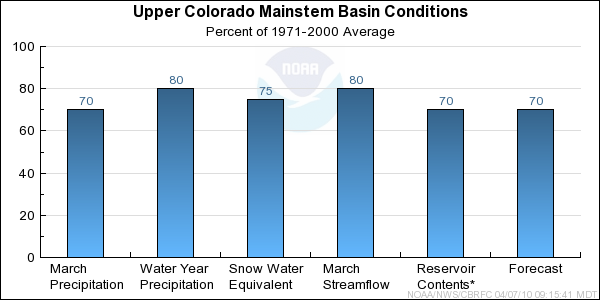
* Percent usable capacity, not percent average contents.
Click for multi-month Graph.
Gunnison Basin Conditions
The following conditions influenced this month's forecasts:
Precipitation:
Seasonal October through March
precipitation was 95 percent of average
in the Gunnison basin. March
precipitation was 95 percent of average.
Snow:
April 1st snow water equivalent was 95 percent of average in the Gunnison basin.
--- Gunnison basin
snow
water equivalent plot
Streamflow:
March streamflow was 80 percent of average.
Soil Moisture:
Modeled
soil
moisture states were below average heading into the winter.
Climate Forecasts:
Climate forecasts were not a factor because there is not a strong correlation
between El Nino conditions and winter precipitation in the Gunnison basin.
Forecast Summary:
March precipitation throughout the Gunnison basin was 95% of average. April 1st snow water equivalent for the Gunnison continued to be near average
with 95%. Therefore, the April through July volume forecast did not change much from last month. The Gunnison
forecasts now range between
74 and 91 percent of average, with a median value of 80 percent.
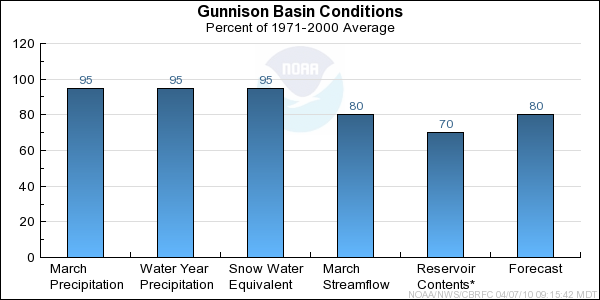
* Percent usable capacity, not percent average contents.
Click for multi-month Graph.
Dolores Basin Conditions
The following conditions influenced this month's forecasts:
Precipitation:
Seasonal October through March
precipitation was 105 percent of average
in the entire Dolores basin. March
precipitation was 115 percent of average.
Snow:
April 1st snow water equivalent was 105 percent of average in the Dolores basin.
--- Dolores basin
snow
water equivalent plot
Streamflow:
March streamflow was 35 percent of average.
Soil Moisture:
Modeled
soil
moisture states were below to much below average heading into the winter.
Climate Forecasts:
The correlation of El Nino and April through July water volumes in the Dolores basin is so small that
it did not influence the forecast process.
Forecast Summary:
Although March precipitation throughout the Dolores Basin was 115% of average, March precipitation in the upper portions of the Dolores basin was below to
much below average. Seasonal October through March precipitation in the upper portions of the Dolores basin was average to below average.
Therefore, the April through July volume forecast was lowered slightly by 5%. The Dolores
forecasts now range between
81 and 87 percent of average, with a median value of 80 percent.
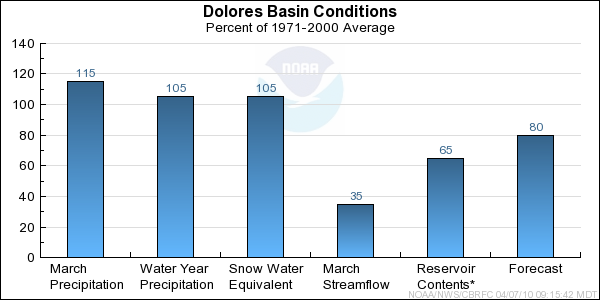
* Percent usable capacity, not percent average contents.
Click for multi-month Graph.
Differences between the full period forecasts and the residual forecasts may not exactly equal the actual observed volumes due to rounding conventions (see Definitions section).
Reservoir Monthly Inflow Forecasts
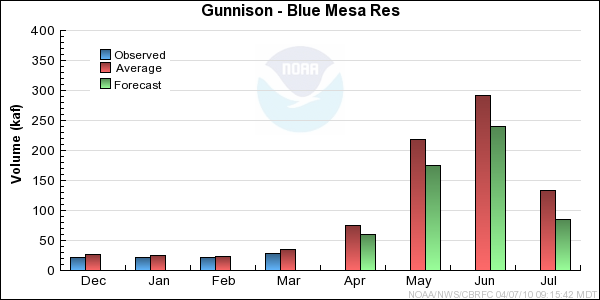
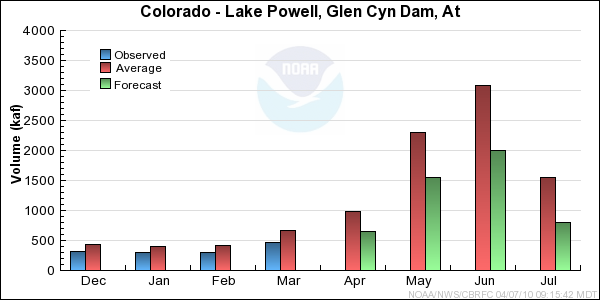
Monthly Streamflows
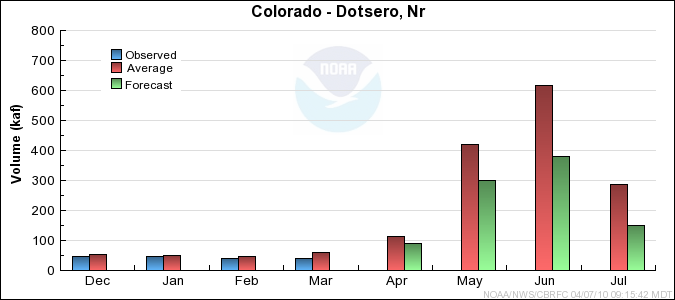


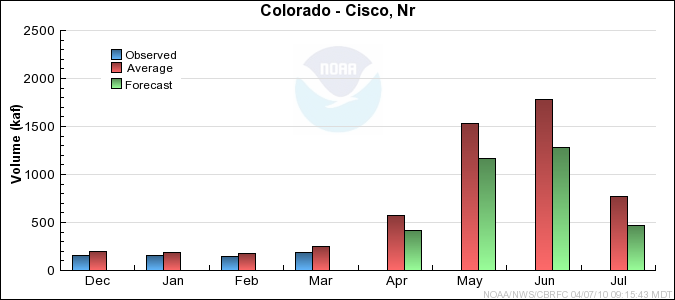
Precipitation Maps
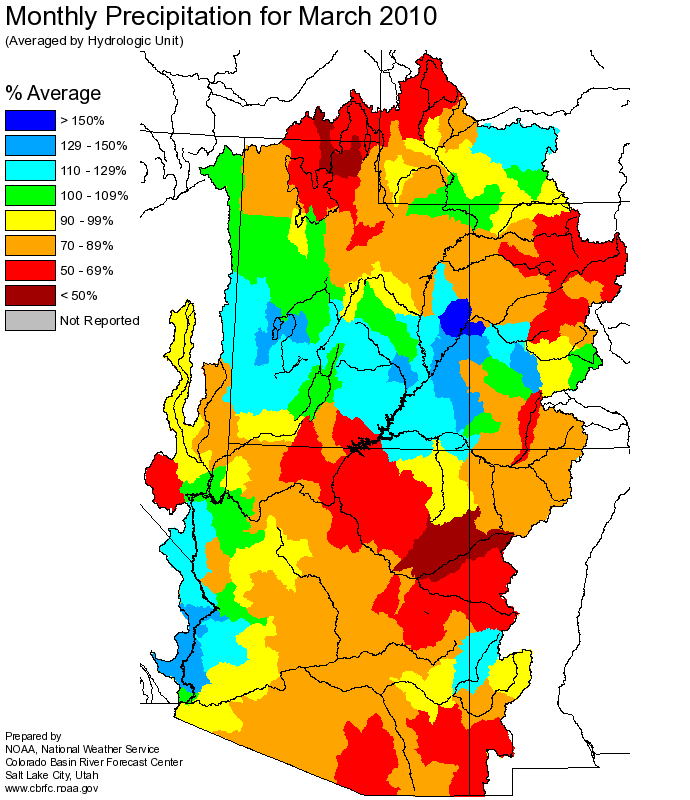
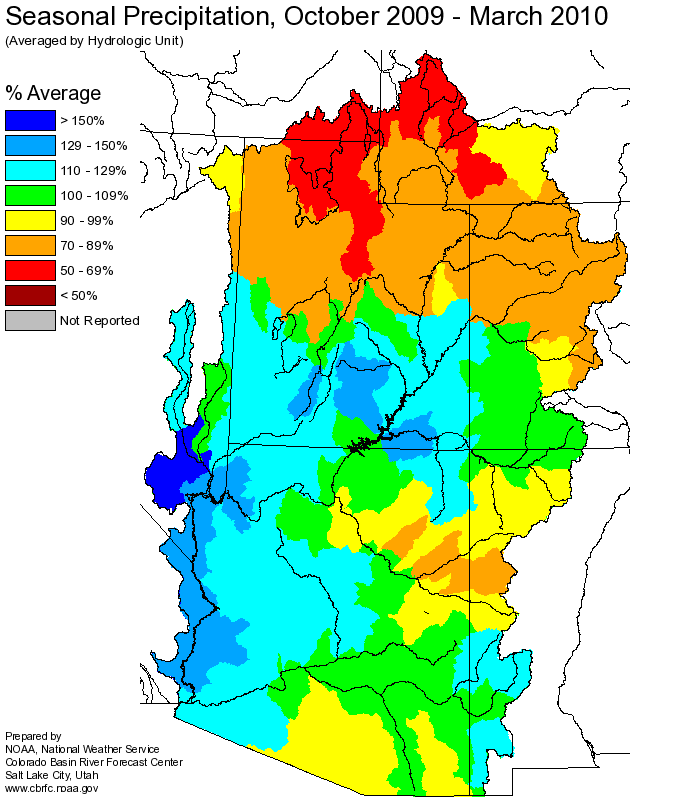
Hydrologist: Brenda Alcorn, Tracy Cox













